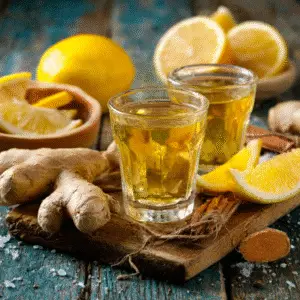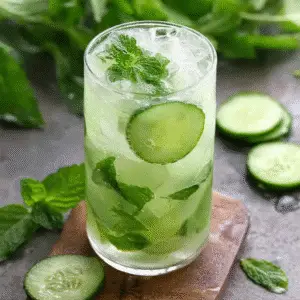🖋️ Written by Olivia
There’s something about that dreamy purple hue that pulls you in even before the first sip. I still remember the first time I tried taro milk tea—sitting at a tiny boba shop in LA, the soft scent of vanilla and earthiness hit before the straw even touched my lips. It was creamy, nutty, and just sweet enough to make you wonder how something this cozy could be served cold. Since then, I’ve been obsessed with recreating the best taro milk tea recipe at home—one that actually tastes like real taro, not just powder and sugar.
Whether you’re team bubble tea or just curious about what makes this violet drink so loved, this guide will walk you through everything—using both powder and real root. If you’re the kind of person who loves putting together your own cozy drinks like iced matcha latte or mounjaro mocktail coffee, then homemade taro milk tea might just become your new favorite ritual.
Let’s get started.
Table of Contents
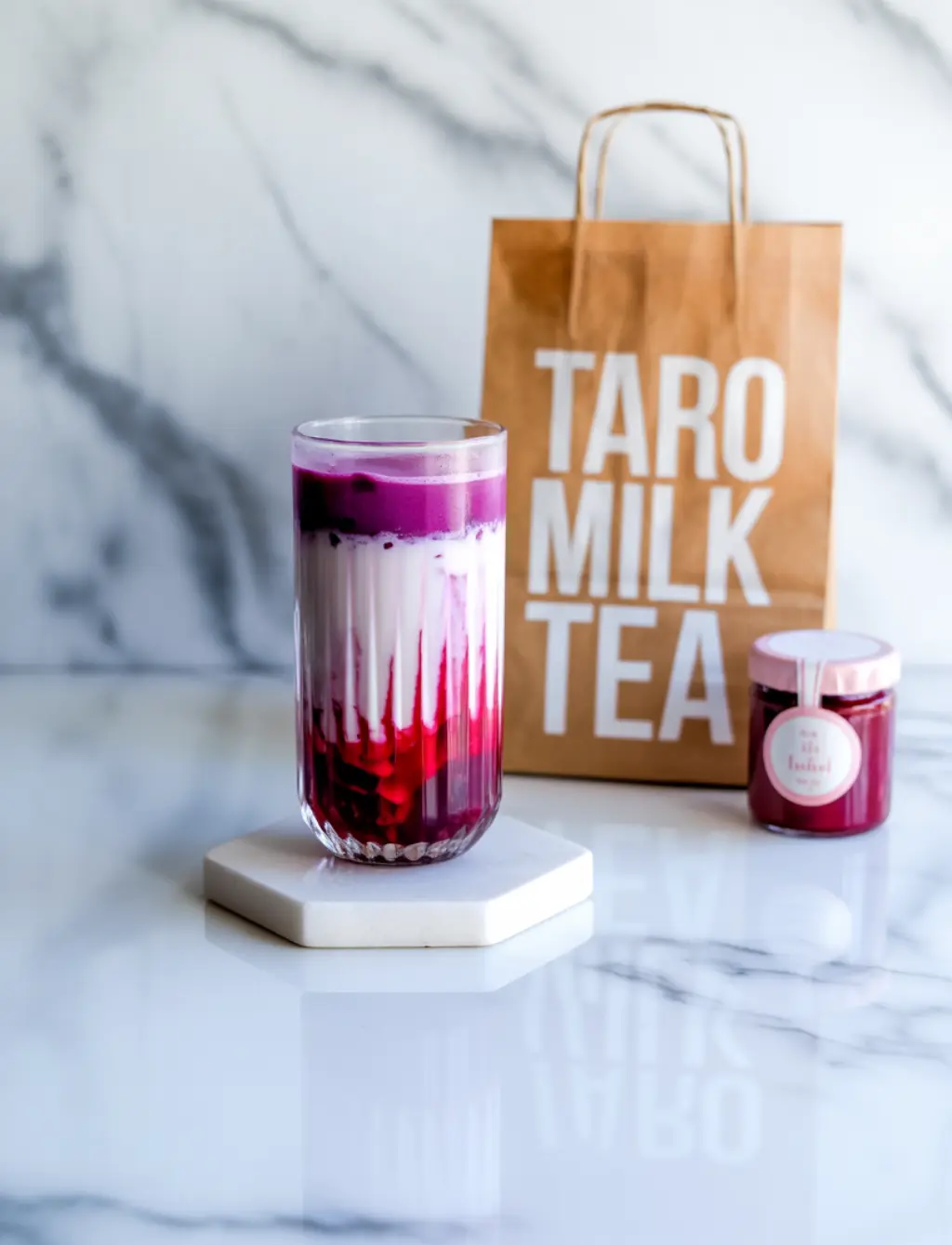
Taro Milk Tea Maison – Recette au Taro Frais ou en Poudre
Ingredients
Equipment
Method
- Faites infuser le thé noir ou vert jasmin et laissez refroidir complètement.
- Si vous utilisez du taro frais : pelez, coupez en cubes, faites cuire 15–20 minutes à la vapeur ou dans l’eau. Écrasez ou mixez avec le lait.
- Si vous utilisez de la poudre : mélangez-la avec un peu d’eau chaude jusqu’à obtenir une pâte lisse, puis ajoutez le lait.
- Ajoutez les perles de tapioca cuites dans le fond d’un verre.
- Ajoutez des glaçons si désiré, puis versez le mélange au taro et enfin le thé infusé refroidi. Mélangez doucement.
- Goûtez et ajustez la douceur. Dégustez avec une paille large !
Notes
Ingredients You’ll Need for Taro Bubble Tea
Essential Ingredients for Taro Milk Tea
Whether you’re using powder or real taro root, the base ingredients stay fairly consistent. Below is what you need to prepare a smooth and flavorful taro bubble tea recipe at home:
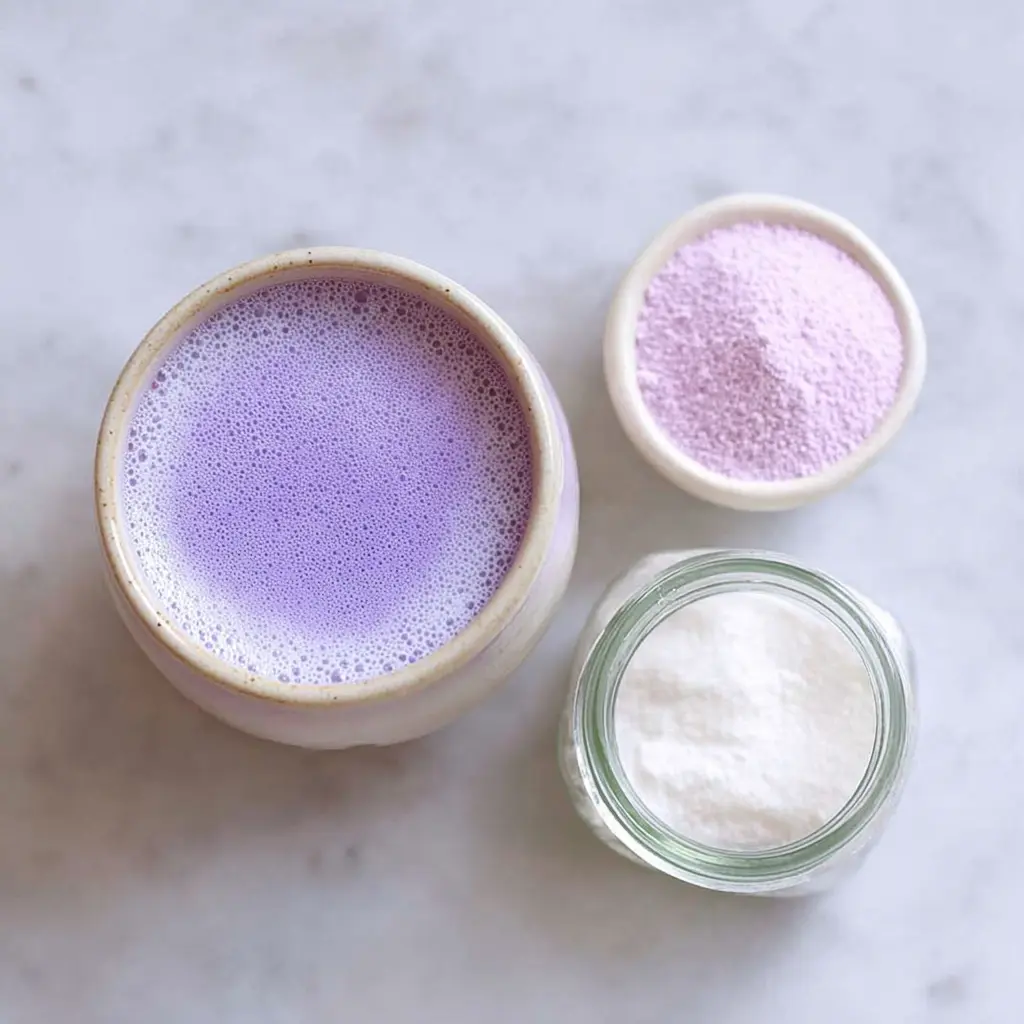
- Taro powder (or steamed taro root, if using fresh)
- Black tea or green tea (jasmine works best)
- Milk – whole milk, oat milk, or almond milk
- Sweetener – sugar, honey, or syrup
- Tapioca pearls (boba)
- Ice cubes
Optional toppings: crystal jelly, brown sugar syrup, or chia seeds for a twist (as found in chia seed detox drinks).
Best Type of Milk for Taro Tea
Many ask what milk pairs best with taro. Here’s a simple breakdown:
| Milk Type | Flavor Profile | Best For |
|---|---|---|
| Whole milk | Creamy, traditional taste | Authentic café style |
| Almond milk | Nutty and light | Vegan option |
| Oat milk | Sweet and rich | Extra smooth texture |
| Coconut milk | Slightly tropical | Great with fresh taro |
Tip: If you enjoy creamy beverages like our mounjaro weight loss mocktails, you’ll love the combination of taro with oat or coconut milk.
For an extra fiber boost, some even sprinkle in chia seeds or opt for plant-based milks to align with detox-friendly routines.
What Is Taro Milk Tea?
What Is Taro Milk Tea Made Of?
Taro milk tea is a creamy, pastel-purple drink made from either real taro root or taro powder, blended with milk and sweetener, often served with chewy tapioca pearls (boba). Originating in Taiwan, it’s one of the most beloved bubble tea flavors worldwide.
Real taro has a starchy, slightly nutty flavor that gives the drink its rich texture. On the other hand, taro powder—often used in cafes—adds a vanilla-like taste and vibrant color. Combined with black or green tea, sweetener, and milk (dairy or plant-based), the drink becomes a smooth and satisfying beverage that’s both refreshing and comforting.
Here’s what you’ll typically find in a traditional cup:
- Steeped tea (black or jasmine green)
- Taro (real or powdered)
- Milk (whole, almond, oat, etc.)
- Sweetener (honey, sugar, or syrup)
- Tapioca pearls or other toppings
Pro Tip: Want to keep it lighter? Try using almond milk and reduce the sweetener—just like we do in our apple cider vinegar detox drink.
Why Taro Milk Tea Became a Bubble Tea Favorite
Taro milk tea rose in popularity thanks to its unique flavor and beautiful appearance. Unlike sugary drinks, taro’s natural earthy tone balances perfectly with milk and tea, making it enjoyable without being overly sweet. It also stands out visually—its signature lavender color is often what catches people’s eyes first.
The flavor is gentle, almost like a sweet potato or vanilla almond blend, which makes it a crowd-pleaser even for bubble tea beginners. Plus, with the rise of homemade drink trends and health-conscious tweaks, more people are now learning how to make their own taro bubble tea recipe at home—just like they’ve done with healthy strawberry lemonade refreshers.
Today, you’ll find it everywhere—from trendy cafes to your local boba shop. But making it yourself? That’s where the fun (and flavor control) really starts.
Choosing Between Taro Powder or Real Taro Root
Taro Milk Tea Recipe with Powder
Making taro milk tea with powder is the easiest method and a great option for beginners. Taro powder usually contains flavor, sugar, and purple coloring, which means you won’t need extra ingredients to achieve the iconic look and taste.
Basic recipe with taro powder:
- Brew 1 cup of strong black or jasmine green tea.
- In another cup, mix 2 tablespoons of taro powder with ¼ cup hot water.
- Stir until smooth.
- Add ½ cup of milk (dairy or plant-based) and your brewed tea.
- Pour over ice, stir, and top with tapioca pearls.
Why choose powder?
- Convenient and fast
- Shelf-stable
- Easy to control sweetness
This version is ideal if you’re also into instant detox drinks or enjoy making trendy beverages like matcha latte at home.
Taro Milk Tea Recipe with Real Taro Root
Using fresh taro root delivers a creamy, rich texture and authentic earthy flavor. Though it takes more time, the result is naturally sweet and incredibly satisfying.
To prepare it:
- Peel and cube ½ cup of raw taro.
- Steam or boil for 15–20 minutes until soft.
- Blend with ½ cup milk and a bit of honey or syrup.
- Add brewed tea and mix.
- Serve chilled with ice and chewy boba pearls.
Why go natural?
- Cleaner ingredients
- No artificial flavors
- Customizable sweetness and creaminess
This method is perfect if you’re a fan of real-food recipes like our apple cider vinegar detox drink or natural zepbound drinks. It’s also a better option if you want to avoid additives and artificial coloring.
How to Cook Tapioca Pearls Perfectly
Preparing Tapioca Pearls for Taro Milk Tea
Tapioca pearls (also known as boba) are the iconic chewy balls that turn milk tea into bubble tea. Cooking them the right way is key to a perfect taro bubble tea recipe.
Step-by-step cooking instructions:
- Boil 4 cups of water for every 1 cup of tapioca pearls.
- Add the pearls only when water is boiling rapidly.
- Stir gently to prevent sticking.
- Cook uncovered for 20–30 minutes (follow your brand’s label).
- Turn off heat and let pearls sit for 15 more minutes.
- Rinse with cold water and soak in brown sugar syrup or honey for added flavor.
Note: For extra softness, use fresh water when soaking.
This step is just as essential as brewing your tea or blending taro. If you’ve tried making homemade drinks like natural mounjaro recipes, you’ll appreciate how ingredient timing matters.
Can You Use Instant Boba?
Yes, but results may vary. Instant tapioca pearls take 5 minutes or less to cook but tend to lose their chewy texture faster.
| Type of Boba | Cook Time | Texture | Shelf Life |
|---|---|---|---|
| Traditional pearls | 20–30 min | Chewy | 1 year |
| Instant pearls | 5 min | Softer | 6–9 months |
Instant boba is great if you’re short on time or want to make a quick low-effort tea recipe, but we recommend the full version for flavor and texture.
How to Make Taro Milk Tea at Home (Step-by-Step)
Easy Taro Milk Tea Recipe with Tapioca Pearls
Making your own taro milk tea at home is easier than it looks. Whether you’re using powder or fresh taro, follow these simple steps to create your own refreshing taro bubble tea recipe:
Ingredients Needed:
- 1 cup brewed black or jasmine green tea
- 2 tablespoons taro powder or ½ cup mashed steamed taro root
- ½ cup milk (whole, almond, oat, or coconut)
- 1–2 teaspoons sweetener (honey, brown sugar, syrup)
- ½ cup cooked tapioca pearls (boba)
- Ice cubes
Instructions:
- Brew your tea and let it cool.
- Mix taro powder with a small amount of hot water OR blend steamed taro root with milk until smooth.
- In a glass, add tapioca pearls at the bottom.
- Pour in ice cubes, then add your milk-taro mix.
- Top with cooled tea, stir gently.
- Taste and adjust sweetness.
This homemade version feels as indulgent as a store-bought drink, minus the additives. If you’ve enjoyed making healthy recipes like chia seed detox drinks or natural zepbound drinks, you’ll love crafting this from scratch.
Pro Tips for Perfect Texture and Taste
- Use freshly brewed tea instead of bottled tea for stronger flavor.
- Adjust sweetness gradually—you can always add more.
- Add your favorite toppings: crystal jelly, popping boba, or even coconut flakes.
Looking for new ideas to mix in? Try rotating between taro, matcha, or iced matcha latte to avoid flavor fatigue.
Taro Milk Tea Flavor Variations and Custom Ideas
Creative Twists on Classic Taro Bubble Tea
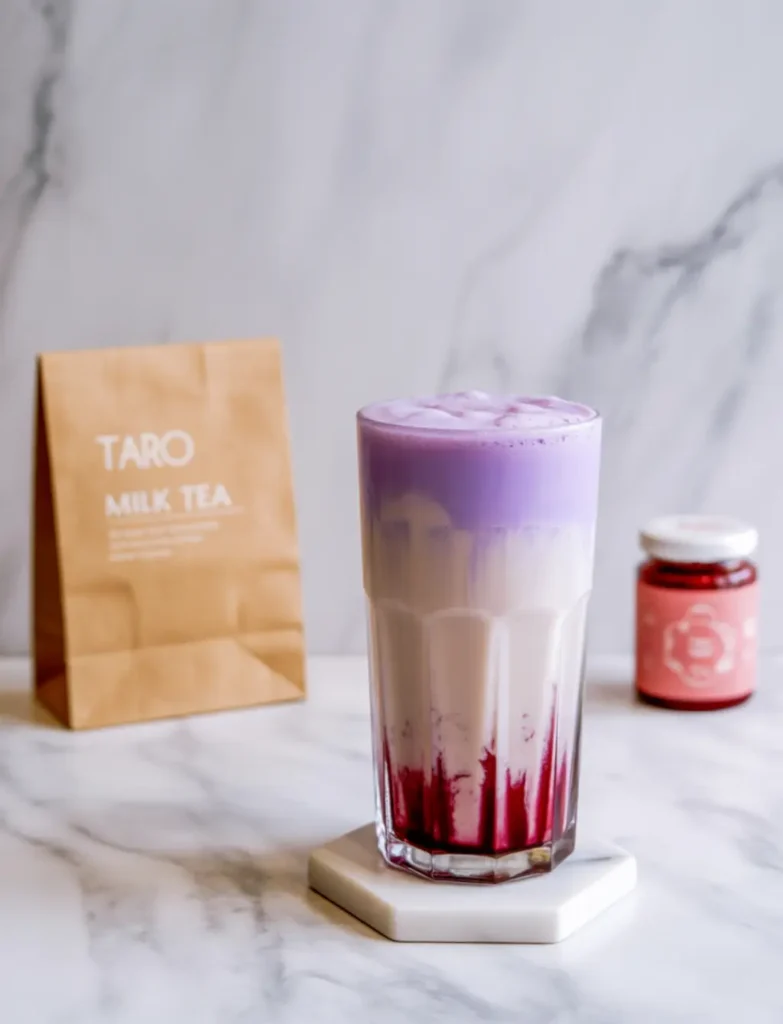
Taro milk tea is delicious on its own, but experimenting with flavors makes it even more exciting. Here are a few popular customizations your readers will love:
- Taro Matcha Latte: Blend matcha powder with the taro mix for a green-tea twist. (Try pairing with our matcha coffee recipe).
- Taro Coconut Cream: Use coconut milk and a touch of coconut cream for a tropical version.
- Fruity Taro: Add strawberry or blueberry purée for a fruity fusion.
- Taro Protein Shake: Add a scoop of vanilla or collagen protein for a post-workout boba.
You can also swap in toppings like crystal jelly, popping boba, or chia seeds to match your dietary preferences or texture cravings.
Low-Sugar and Dairy-Free Options
Many readers look for ways to enjoy taro milk tea with fewer calories or allergens. Here’s how:
| Concern | Swap This | For This |
|---|---|---|
| Dairy-Free | Whole milk | Almond, oat, or soy milk |
| Low-Sugar | Brown sugar or honey | Monk fruit or stevia syrup |
| Low-Carb Boba | Traditional tapioca pearls | Crystal boba or konjac jelly |
These swaps are perfect if you’re following a low-carb lifestyle or tracking macros. You can still enjoy your favorite bubble tea with guilt-free ingredients.
Is Taro Milk Tea Healthy? Nutrition & Caffeine Info
Health Benefits and Drawbacks of Taro Milk Tea
When people ask, “Is taro milk tea healthy?” — the answer depends on how you make it.
Taro root itself is packed with:
- Fiber
- Antioxidants
- Vitamins E and B6
- Magnesium and potassium
These nutrients may support digestion, immunity, and heart health. However, commercial versions of taro bubble tea often contain artificial flavoring, creamers, and lots of sugar.
Homemade recipes (like the one we shared in PART 5) are much healthier and customizable — especially when you swap in low-sugar options or plant-based milk. Many readers combine it with a natural zepbound drink for a balanced lifestyle.
Does Taro Milk Tea Contain Caffeine?
Yes, if made with brewed black or green tea, taro milk tea will contain caffeine. Here’s a breakdown:
| Tea Base | Caffeine Level (per cup) | Notes |
|---|---|---|
| Black Tea | 47–90 mg | Most traditional recipes use this |
| Green Tea | 25–45 mg | Milder taste, less caffeine |
| Herbal (no tea) | 0 mg | Great for kids or caffeine-sensitive |
Want a caffeine-free version? Just leave out the tea and use milk + taro alone — it’s creamy, sweet, and still indulgent.
This flexibility makes it easy to fit taro tea into any routine — even at night, paired with a bedtime detox drink.
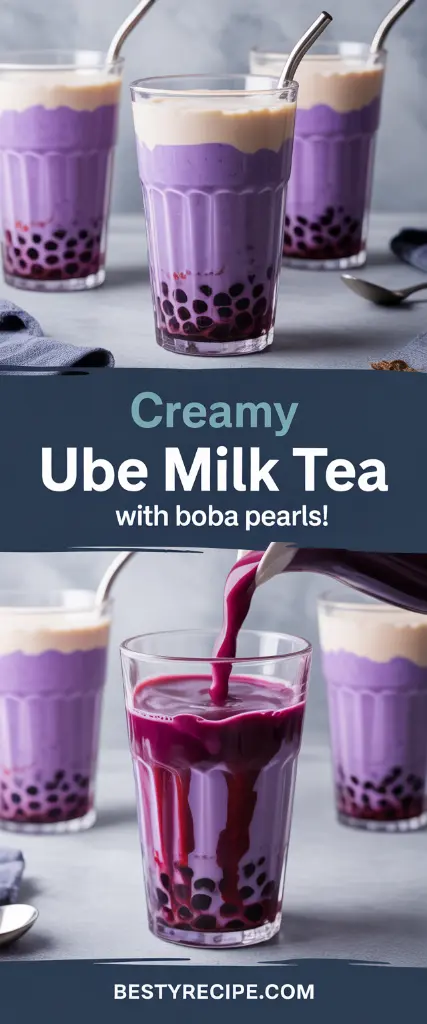
Frequently Asked Questions About Taro Milk Tea
What is taro milk tea made of?
Taro milk tea usually combines mashed or powdered taro, brewed tea (black or jasmine), milk or a plant-based alternative, sweetener, and tapioca pearls (boba). Some versions add coconut cream or flavored syrups for extra richness.
Is taro milk tea healthy?
It can be if prepared at home with real taro, minimal sugar, and wholesome milk. Fresh taro provides fiber plus minerals such as magnesium and potassium, making a cleaner option than most store-bought mixes.
Does taro milk tea have caffeine?
Only when brewed tea is included. Skip the tea—or use herbal tea—and the drink becomes naturally caffeine-free.
Is taro naturally purple?
Raw taro root is off-white with faint lavender streaks. The vivid purple in many bubble-tea shops comes from food coloring, ube extract, or purple yam flavoring.
What milk is best for taro tea?
Almond milk, oat milk, and full-fat dairy all work well. Coconut milk gives a tropical twist and extra creaminess—choose according to dietary needs.
Why does taro taste so good in milk tea?
Taro’s creamy, nutty sweetness blends smoothly with milk, yielding a comforting flavor often compared to vanilla with earthy notes.
How is taro different from ube?
Taro is starchier and more neutral in flavor. Ube (purple yam) is sweeter and naturally deep purple, so they are not direct substitutes in recipes.
Can I enjoy taro milk tea while on a diet?
Yes—reduce added sugar, use lower-calorie plant milk, and replace traditional boba with lighter add-ins like crystal boba or chia seeds.
Conclusion: Sip the Sweet Comfort of Taro Milk Tea at Home
Taro milk tea is more than a trendy drink—it’s a comforting fusion of flavor, texture, and tradition. Whether you’re sipping it with chewy boba pearls on a sunny afternoon or preparing a caffeine-free version before bed, this drink offers flexibility for every mood and diet.
By learning how to make it from scratch, you control everything—from the type of milk to the sweetness level and even the tea base. You can enjoy a healthier version at home, ditching the preservatives and excess sugar found in many store-bought options.
Looking to pair it with something lighter? Try rotating it with natural detox teas or our homemade zepbound recipe for a balanced week of sipping and snacking.
Now that you’ve got the full guide, go ahead and make your first cup—you’ll see why this pastel purple drink has captured hearts around the world.
Hungry for more? Discover fresh recipes every day on BestyRecipe’s Pinterest & Facebook!

